For a rewarding experience down under, hike New Zealand’s Banks Track. Cross the crater rim of an extinct volcano, enjoy diverse and impressive scenery, and learn about penguin conservation. It’s one of New Zealand’s finest walks. Here is my detailed review of the three-day hike.
Table of Contents
What is the Banks Track?
The Banks Track was the first hut-to-hut private trail established in New Zealand. Since its inception in 1989, it has become so popular that it attracts over 2,500 hikers each year.
Open from October 1 to April 30, the 31-kilometre self-guided, self-catered, and self-paced hike crosses the stunning Banks Peninsula on the South Island. It can be completed in two days or three days. The three-day option is capped at 12 hikers, and the two-day hike has a maximum of four. Numbers are limited to minimize the impact on the land and ensure space in the three huts along the route.
The overnight stay at Flea Bay includes a free penguin tour (spring/early summer) and a kayaking option.
The story behind the Banks Track
After some tough years of soaring interest rates and rock-bottom wool prices, an enterprising group of farmers decided to share their beautiful farmland with hikers and diversify their income in the process. Collectively, their properties cross the crater rim of an extinct volcano and various forested and coastal landscapes. It’s a perfect setting for developing trails and establishing an infrastructure appreciated by hikers and ecotourism adventurers.
Overnight accommodation, cartage services, and an efficient booking system make it an attractive proposition for those with a penchant for unique hiking experiences.
Each land-owning family manages its own section. This involves repairing steps, stiles, and bridges, repainting markers, clearing deadfalls, keeping trails clear of vegetation, cutting grass, and checking signs and safety barriers. Three families maintain huts and associated facilities at overnight stops.
Is the hike for you?
Some reports suggest that it’s appropriate for novice hikers. Our group of five relatively fit sexagenarians beg to differ. It was no walk in the park, and some challenging stretches required clamouring on all fours. With frequent and necessary breaks, there was no way we could have completed the hike in two days or carried anything larger than a daypack. Besides, there’s so much to see and appreciate that the two-day version must feel rushed for anyone who isn’t a fit and accomplished hiker.
Pack cartage is included in the three-day option so three-day hikers can manage with a small day pack. The two-day hikers we met carried their gear in a decent hiking pack.
Accommodation
Each overnight accommodation is different. It ranges from the purpose-built lodge at Ōnuku to the old farm cottage at Flea Bay and colonial cottages at Stony Bay. Each one offers rustic comfort, history, warmth, and character.
All have fully equipped kitchens, comfortable sleeping quarters, and flush toilets and hot showers. A well-stocked honesty shop is available at Stony Bay.
The Banks Track
The hike starts with an overnight stay in Ōnuku. We were picked up from the town centre and given an informative 20-page booklet and a brief orientation. With a 5:30 pm rendezvous outside Akaroa’s old Post Office, we had the option to eat beforehand or grab some takeout for our evening meal. The ride to Ōnuku Farm took about 20 minutes. The accommodation consisted of two connected lodges and four stargazing huts. When we were dropped off, we were puzzled as to why other hikers left their bags behind and made a dash for the accommodation. We quickly clued in that choice of huts, rooms, and beds was on a first-come basis.
Day 1: Ōnuku to Flea Bay
At 200 metres above sea level is the Ōnuku Farm Hostel managed by the Hamilton family. It overlooks Akaroa Harbour, a gorgeous view that could only improve as we climbed higher the following day.
The first morning began with a hike up an old road past the ruins of the colonial home and dairy of Paradise Farm at 350 metres. It was a steep climb up to Trigg GG at 699 metres, the highest point on the walk. We were ascending the side of an extinct volcano after all! Pausing frequently to admire the panoramic view of Akaroa harbour made the trek much more enjoyable. The grassy slopes were dotted with sheep that stared quizzically at us. It’s not that trampers were a novelty; perhaps they were guessing our nationalities or passing judgment on our fitness levels.
On the way, we entered cattle country at the Gibbs family property. Negotiating fences was a breeze with well-built stiles. By this time, I was silently complimenting the Banks Track team for offering a cartage service (for three-day trampers), and my more active companions for slowing their pace and offering support.
Reaching Trig GG at 699 metres was worthy of a few fist pumps, and pausing to soak up the view of Akaroa Harbour.
At the time, I had no idea what Trig meant, assuming it was a New Zealand term associated with elevation. I was to discover later that Chur New Zealand wrote a helpful article that shed more light on the subject.
Soon after Trig, we stopped at the walkers’ shelter for a snack before crossing over the crater rim. We were at the half-way point, and I was thinking — what goes up must come down and I was looking forward to a leisurely descent.
A brief section of gravel road started us off on our descent into Flea Bay. From the turnoff at Mortlock’s Mistake, the trail followed a stream through conservation reserves across Helps family land. The track wound its way through a deep gully containing a stand of native red beech, including one specimen 400 years old. A wide variety of ferns dominated the lush understory. The stream accompanied us all the way, through a series of cascades and waterfalls. From Forks Gully, the trail brought us to a narrow valley containing giant mamaku tree ferns before emerging into the grazing land of the valley floor.
As for the part about a “leisurely descent,” at times it was torturous. The trail was not up to national-park standards where public funds and workers’ jobs involve creating and maintaining trails of a pre-determined quality and width. The Banks Track is a different story. It crosses rugged terrain and is maintained by families who have other responsibilities yet do their best to make their land as accessible as possible to trampers.
Backed by the hills and valleys of our afternoon’s descent, our overnight accommodation was a charming 160-year-old pioneer cottage with lots of character and a log-burning fireplace. It’s just 200 metres from the beach and the Pōhatu Marine Reserve hosting the largest little penguin/kororā population on mainland New Zealand.
Shireen and Francis Helps have been involved in penguin conservation for over 30 years. Their efforts include reducing introduced predators by trapping cats, ferrets, and stoats, and scattered throughout the Helps property are nesting boxes, some with nesting penguins.The reserve hosts about 1260 breeding pairs.
The Helps family operates Pōhatu Penguins at Flea Bay. From the homestead, we donned camouflage gear before heading out in search of kororā. The penguins breed between September and mid-January, and adults moult between December and the end of February. The tours are free; there is a contribution box in the cottage for hikers to support these endeavours.
Day 2: Flea Bay to Stony Bay
With the track following the coast between Flea Bay/Pōhatu and Stony Bay/Opatuti, the hike on Day 2 promised to be quite different from that of the day before. We would climb to an altitude of just 150 metres and enjoy primarily coastal views.
Before leaving the Helps farm, we passed several nesting boxes of moulting kororā. The moulting season lasts for 10 to 18 days. The penguins must be in excellent condition before starting the moult as they need to stay on land and can’t go into the water to feed. They’re not waterproof again until the moult is complete.
The track hugged the steep slopes of bays and inlets and wound through groves of New Zealand Flax.
After entering the Armstrong farm, we were treated to some stunning coastal views. Thank goodness we were blessed with fine weather and gentle breezes, as this section is completely exposed to the vagaries of the weather. It would not be as pleasant in windy or wet conditions.
At Seal Cave, a group of New Zealand Fur Seals entertained us during our lunch break.The track climbs steeply after Seal Cave to the ridge (with magnificent views to Pompeys Pillar to the north) and then follows the coast.
Like the Helps and other landowners, Mark and Sonia Armstrong are actively engaged in protecting endangered species. A colony of sooty shearwaters, also known as mutton birds or tītī, was almost wiped out by predators before the Armstrongs built an earlier version of the existing predator-proof fence in 1998. There are about 50 nesting burrows. The Armstrongs are also committed to farm restoration and native plantings.
Rounding the last headland, we were treated to a view of picturesque Stony Bay.
It was a relatively short descent through a forest down to the huts where we found more nesting boxes of moulting penguins.
The Armstrongs have established a veritable village of quirkiness from a shower with a huge tree occupying one wall…
… to two outdoor wood-heated bathtubs, an outdoor pool table with paint cans to catch balls, and several gorgeous rustic cabins. The tiny settlement oozes with character. Their well-equipped honesty shop stocked meat, groceries, fresh produce, beer, and wine at very reasonable prices.
Day 3: Stony Bay to Akaroa
Returning to Akaroa involved hiking from sea level at Stony Bay up to the crater rim at 690 metres, then down to the harbour at Akaroa.
We knew better than to be lulled into a false sense of confidence with the steady, gentle start to the ascent. From our vantage point at sea level, it looked like an easier climb to the summit through the Stony Bay Valley than that of the first day.
Deeper into the Hinewai Reserve, the ascent grew steeper as we climbed through the ancient (and regenerating) forest. Love the half-way markers!!
Predator control is a crucial component of conservation efforts to protect endemic species through an extensive trapping program. Introduced species (feral cats, ferrets, stoats, weasels, and possums) have had a devastating impact on native flora and fauna.
We hiked from sea level to the Tara Track at the saddle at 690 metres. It was a magnificent sight looking back over how far we’d climbed.
Akaroa Harbour was within sight but the last section descended quite steeply all the way back to town. We could feel the descent in our knees.
What to pack
Our group of five *opted for pack cartage. This didn’t translate into five packs as we were prepared to share the space of two or three bags. The Banks Track team had a four-pack minimum (maximum weight of 15 kg each), and we were hoping other three-day hikers would book cartage to help meet the minimum threshold. This proved to be the case, and our group ended up sharing three packs for food, sleeping bags, and personal items.
*Update: pack cartage is now included in all three-day packages.
- Food. You’ll need to prepare your meals. For breakfasts, coffee, long-lasting milk, toast, peanut butter, and jam were sufficient for us. Pita wraps (egg salad, tuna, and salmon with lettuce) were our lunch staples. For suppers, freeze-dried foods did the trick. One group member picked up the freeze-dried foods at an outdoor store before leaving home in Australia; for everything else, we shopped in Akaroa.
- Personal items. These included sleepwear, travel toiletries, flashlight, quick-dry towel, flip-flops, charger for camera and phone, earplugs, spare quick-dry pants, extra shirt and socks (both in merino wool), and a travel clothesline. At the end of a long day of hiking, my feet were ready to escape from their walking shoes. I like Havaianas Slim; they’re lightweight and well made. They also double as shower shoes, and dry quickly.
- Shoes. Choose sturdy, broken-in shoes with a good tread, and preferably waterproof. Mine were partially waterproof, and I treated them with a water-resistant spray before leaving home.
- Blister-prevention wool. While packing up on Day 3, I noticed my Kiwi roommate wrapping New Zealand (duh, what else?) wool between her toes. She willingly shared some with me, and it certainly made the day’s walk much more comfortable.
- Duct tape. Unfortunately, I inadvertently left my small stash of duct tape behind in Akaroa. One of my companion’s boots gave way at Trigg on the first day, and a friend had some packing tape that thankfully held up until the end of the hike. It was a reminder to travel with duct tape.
- Daypack. I chose a packable waterproof pack (Arkadia Sea to Sky). My hiking list included layers, trail snacks, first-aid kit, medication, sunscreen, sunglasses, reading glasses, hand sanitizer, tissues, toilet paper (there are a few outhouses along the track) and dry bags (Outdoor Research Dry Ditty Sacks) for extra security to protect my camera and phone. (Not that cellular reception was available beyond the rim of the volcano). If your pack isn’t waterproof, pack a rain cover and perhaps an inside liner.
- Trail snacks. Ingredients for our trail snacks were part of our pack cartage, and each morning we’d prepare snacks to carry in our day packs. We each carried an egg salad/tuna/salmon wrap with lettuce, a piece of fruit (apple, mandarin), and a muesli bar. My favourite was a cobbled-together trail mix of nuts, dried fruit, and Smarties/M&Ms. Since then, I’ve discovered this delectable collection of 15 healthy hiking snacks, an ideal resource for a hiking or cycling trip.
- Camera. Bring your camera, preferably something light and compact, with a telephoto lens. My Panasonic Lumix DMC ZS200 fit the bill and served me well. Organize a way to access it quickly from a pocket or pouch. There’s so much variety in landscape and fauna that you’ll be reaching for it often.
- Hiking pole(s). I don’t know how I would have managed without a walking stick. It was invaluable on the steep trails, crossing creeks, and negotiating soggy sections dominated by mud and rocks.
- Sunscreen. It’s a necessity. The New Zealand sun is more powerful than the country’s latitude might suggest.
- Chill sleeves. My Castelli chill sleeves provide an extra layer during chilly periods. However, I’ve found them incredibly beneficial for protection from the sun in both tropical and temperate climates. I slapped on sunscreen under the chill sleeves for all-day protection.
- Sun hat. I appreciated my cap with a legionnaire’s flap to protect my neck along sunny stretches (Columbia Schooner Bank Cachalot III). I fashioned a string with a clip to attach to clothing, so it could be easily flipped on and off when passing through sunny and shady sections. A couple of my friends each packed a warm beanie/toque.
- Clothing layers. You won’t want to be too warm or too cold. Our February weather suggested average temperatures of between 11 and 21 C, and eight rainy days for a total of 42 mm for the month. Nevertheless, we were prepared for extremes. It’s a standard premise in New Zealand to prepare for four seasons in one day. Choose lightweight quick-drying fabrics; mine were merino.
- Rain gear. Preparing for wet weather is essential. I packed waterproof rain pants (Marmot Women’s Pre-Cip Pant) and a lightweight waterproof jacket with a hood (Arc’teryx Norvan SL Hoody).
- Insect repellent. It’s not unheard of to encounter sandflies on the track. My previous brush with the dreaded NZ sandfly wasn’t pleasant, so I was prepared with Goodbye Sandfly Repellent and antihistamine pills. We didn’t face any sandflies in February. There’s an app, Sandfly Map, where users can report sandfly hotspots around New Zealand.
- Cash. It’s a cash-only system along the track. There are a few basic goods at Flea Bay (mostly soft drinks and chocolate bars) and a really well-stocked Trampers’ Shop at Stony Bay. At Flea Bay, you’ll want to make a donation to support penguin conservation. The honesty system prevails, so bring some cash in a mixture of denominations.
- Water. Have a good drink before leaving each morning and carry at least a litre of water. In one of my water bottles, I mixed a sachet of Scratch Labs Hydration Drink Mix.
- Sleeping bag. Pack your own or rent one. I opted for a rental because the three-day hike was a small segment of a much longer trip. I packed a silk sleeping bag liner (Silksak YHA) for extra warmth and comfort.
- Earplugs. Chances are you’ll be exhausted and won’t need sleeping aids, but just in case, earplugs or in-ear headphones might come in handy to block out noise.
The verdict
The three-day hike of the Banks Track was a fantastic experience and a perfect adventure for a family or group of friends. It rewarded us with some stunning views. The accommodation was basic, but unique, and more than met our needs. The opportunity to socialize with other hikers was an added highlight. Hiking the Bank’s Track is an ideal way to experience one of the many picturesque parts of New Zealand.
Contact the helpful Banks Track team for more information.
Might you be interested in these related posts?
- Pack a silk sleep sack for hygiene, comfort, and sustainability
- Travelling with duct tape: 30 practical uses
- A review of the Arc’teryx Norvan SL hoody review: a breathable, packable, lightweight rain jacket for travellers
- Buying a SIM card in New Zealand
Are you travelling within, or to, New Zealand anytime soon? If you these posts might be of interest:
- The best way to see New Zealand’s Milford Sound
- The controversial story of New Zealand’s quirky bra fence
- For amazing scenery, cycle New Zealand’s Queenstown Trail
- Hike or cycle New Zealand’s Roxburgh Gorge Trail
- While in New Zealand, don’t miss the dolphin-spotting dogs of Akaroa at work
Care to pin it for later?
This post is neither sponsored nor solicited. I paid the full cost of my Banks Track experience and have not received any requests, instructions, or rewards from the Banks Track organization.
Amazon links on this page are affiliate links. If you use one to buy something, you don’t pay more, but this website earns a small commission that helps pay the costs of maintaining the site. Thank you for your support.

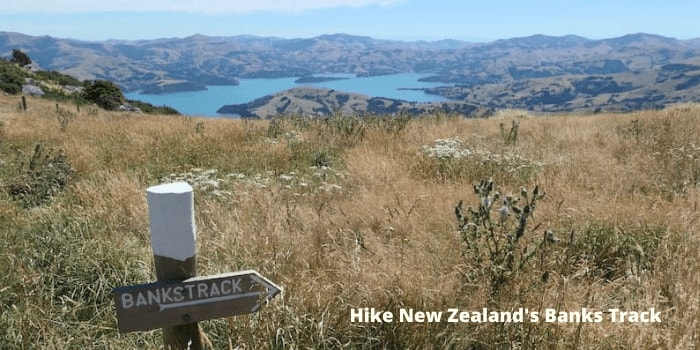
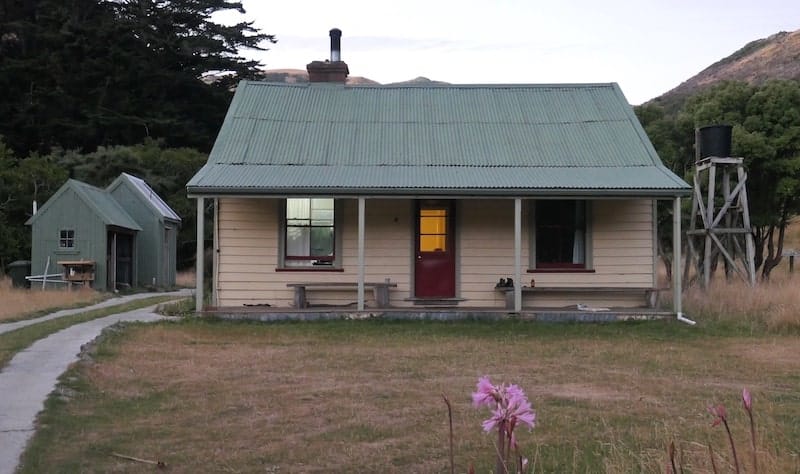
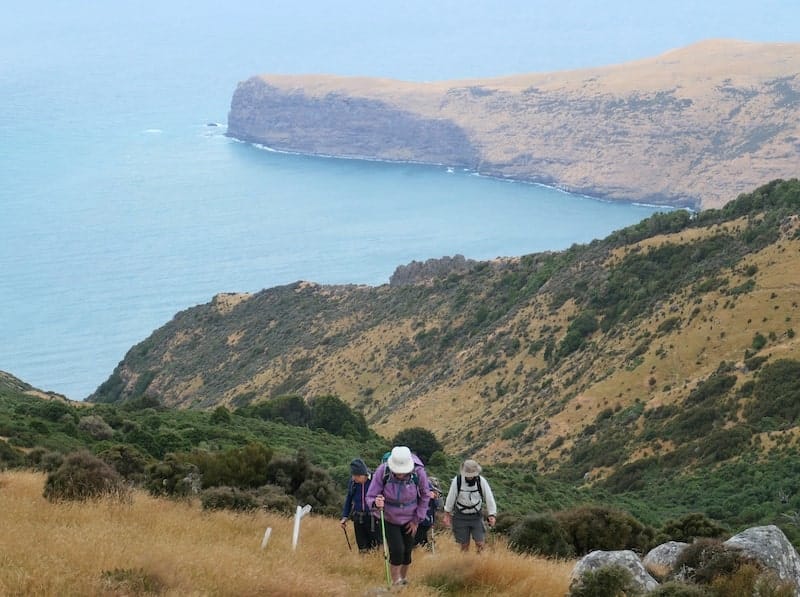
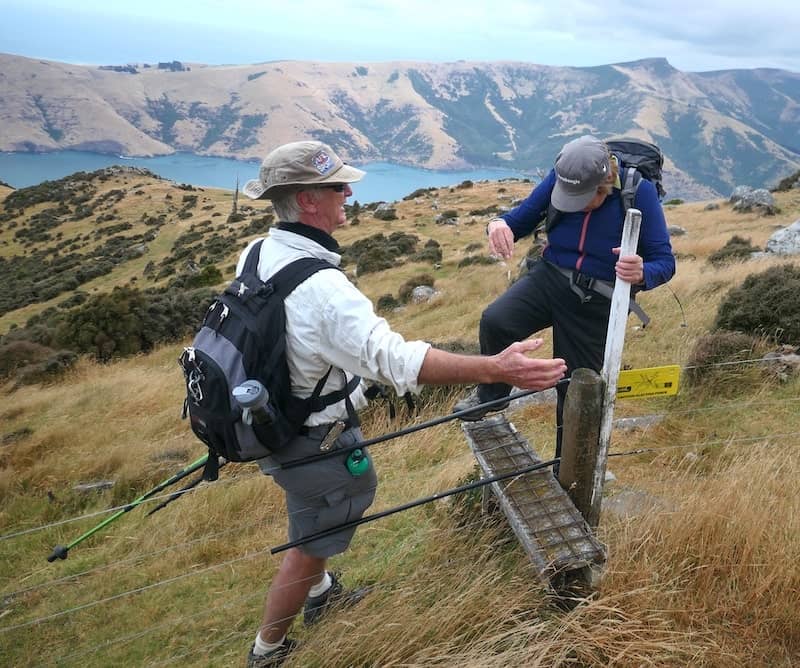
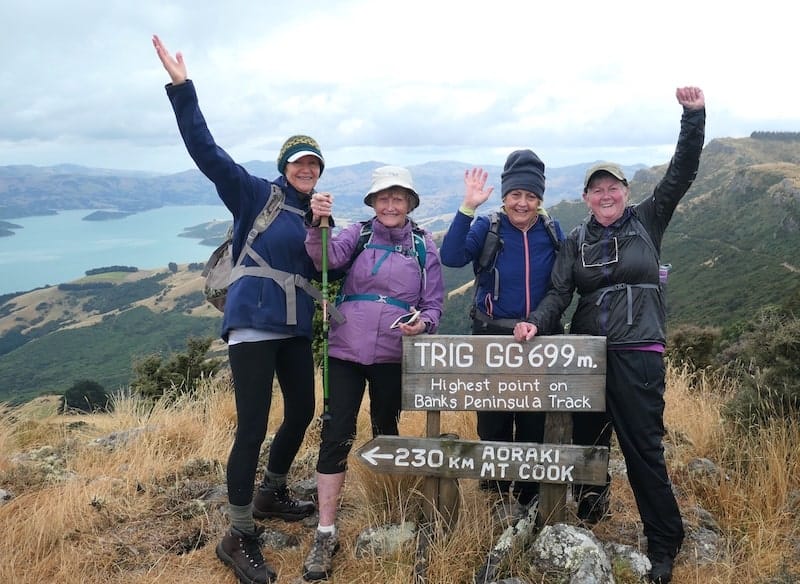
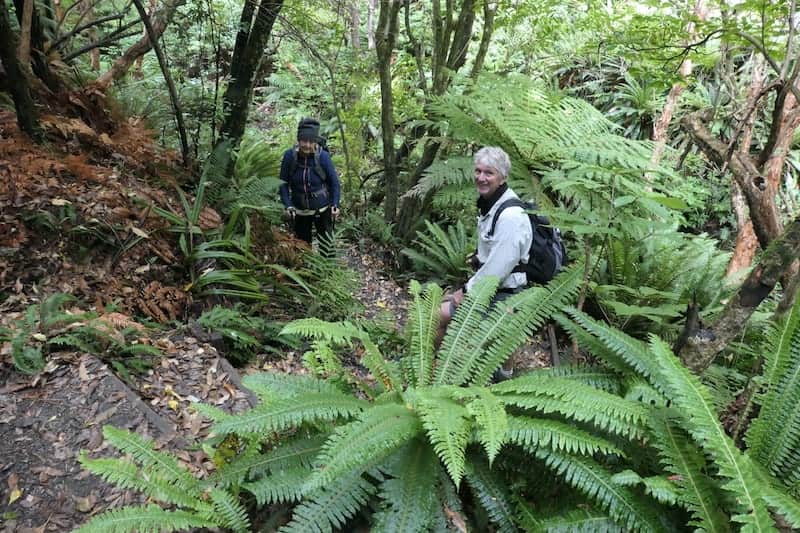
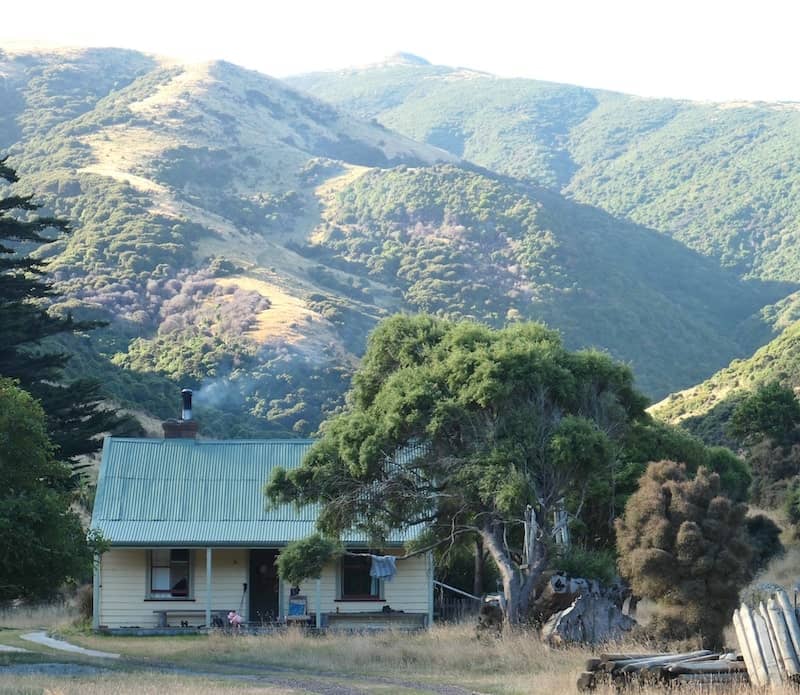
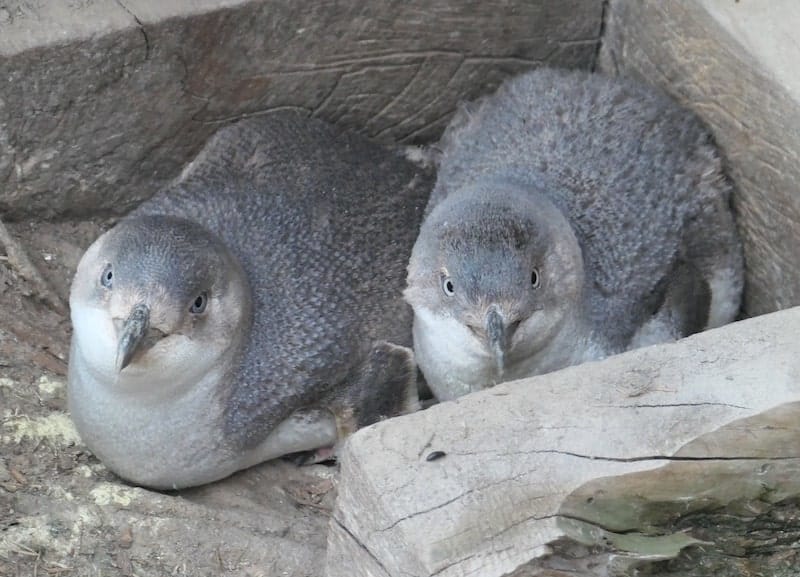

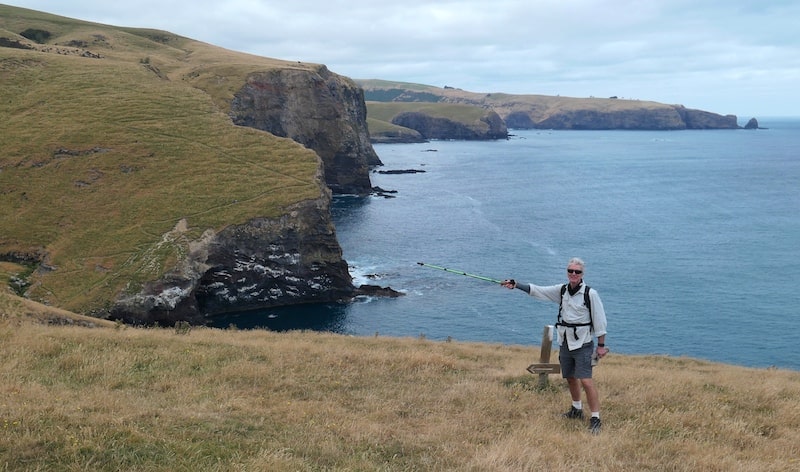
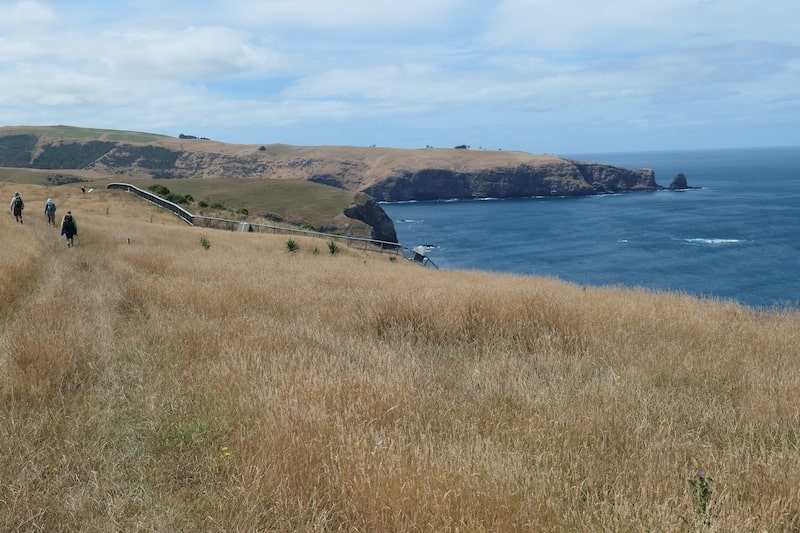
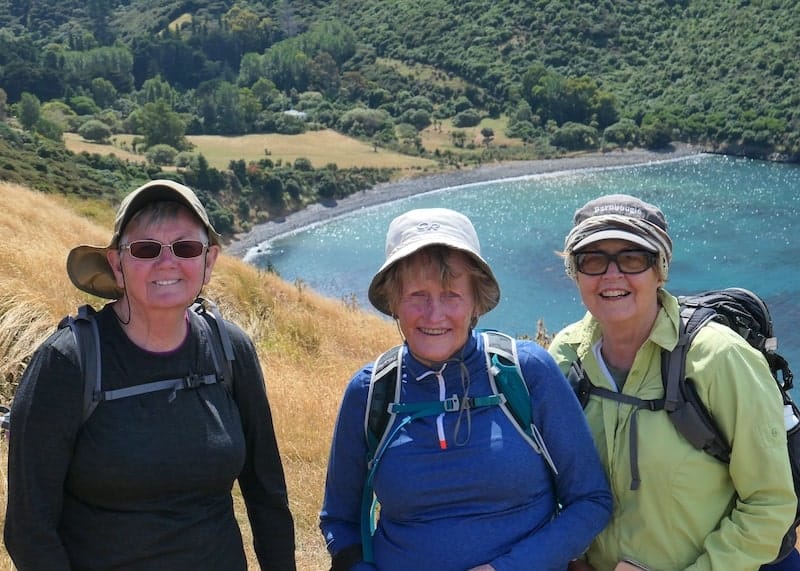
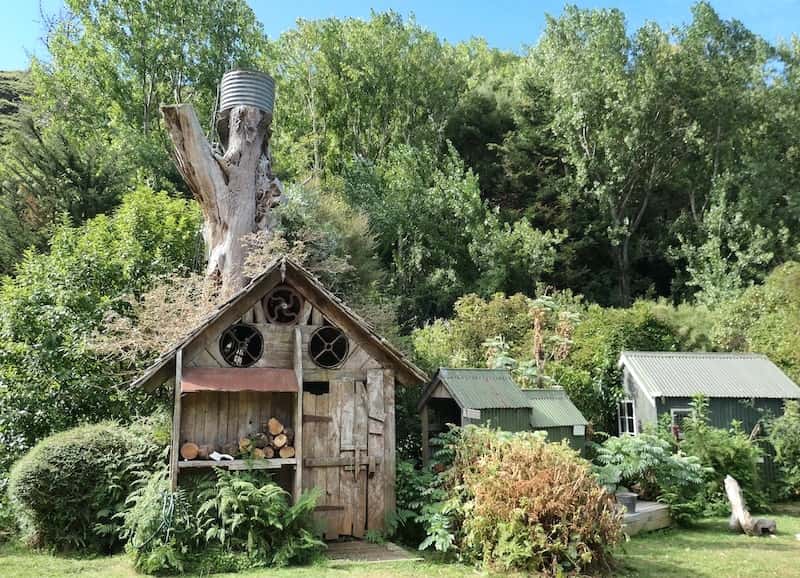
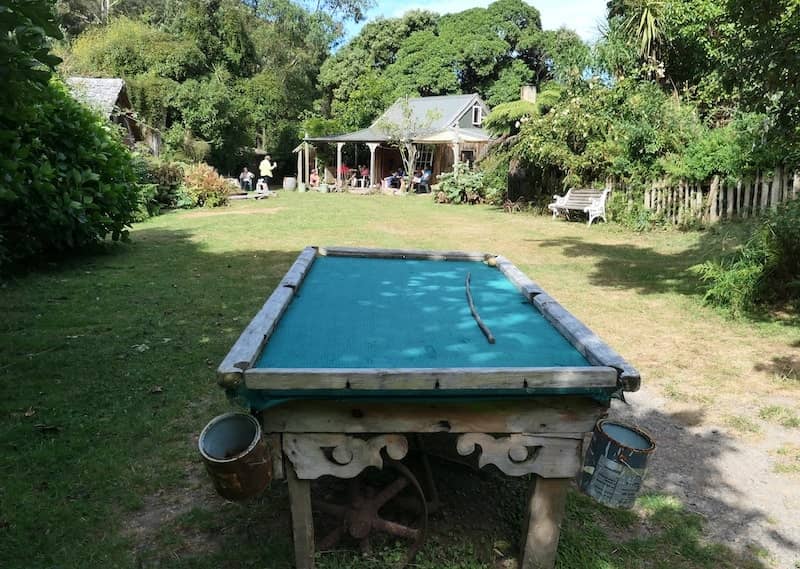
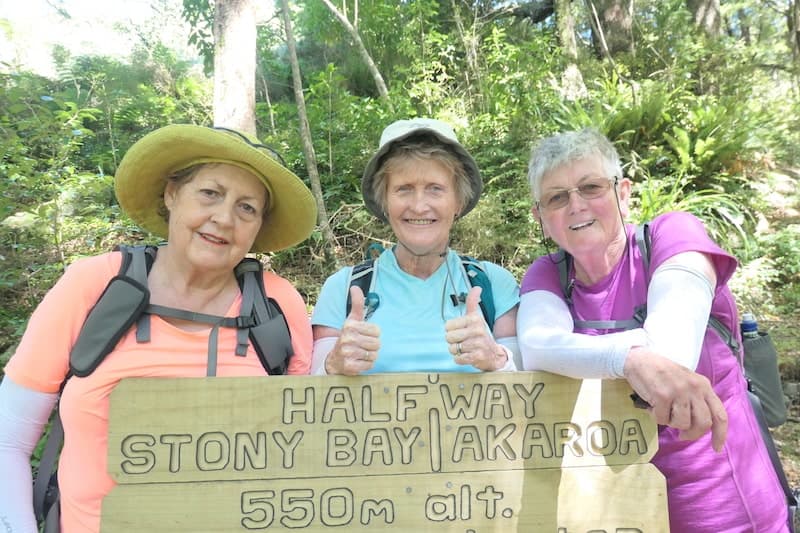
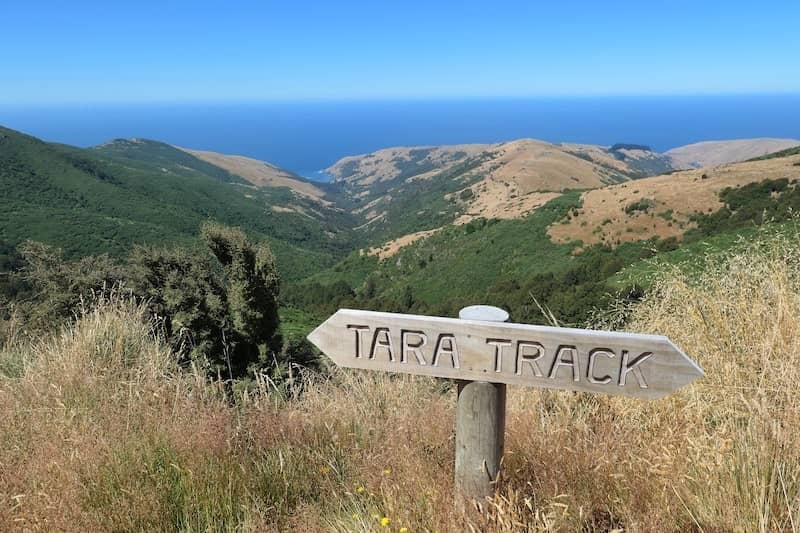
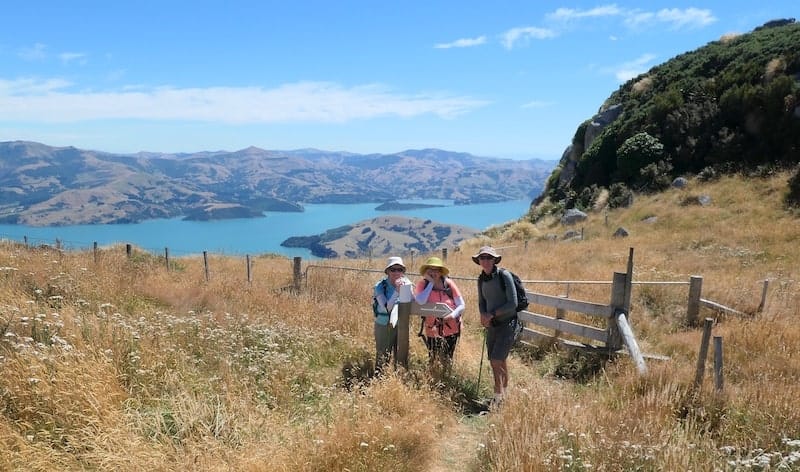
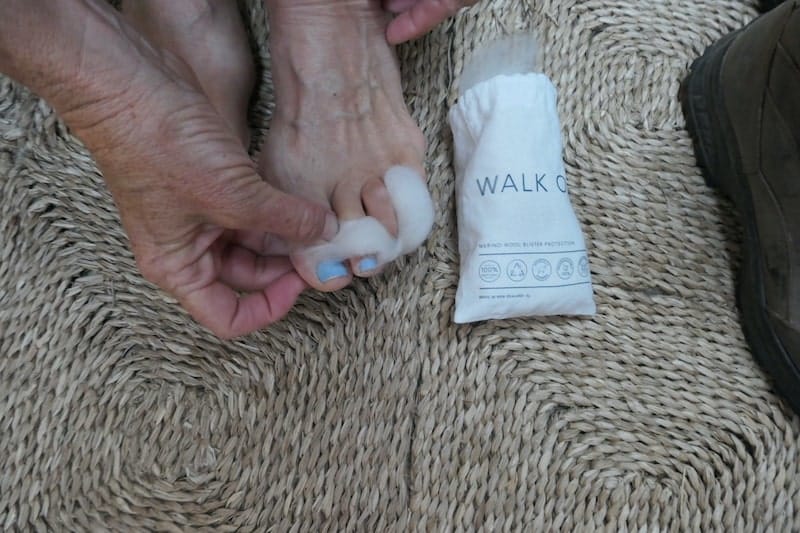
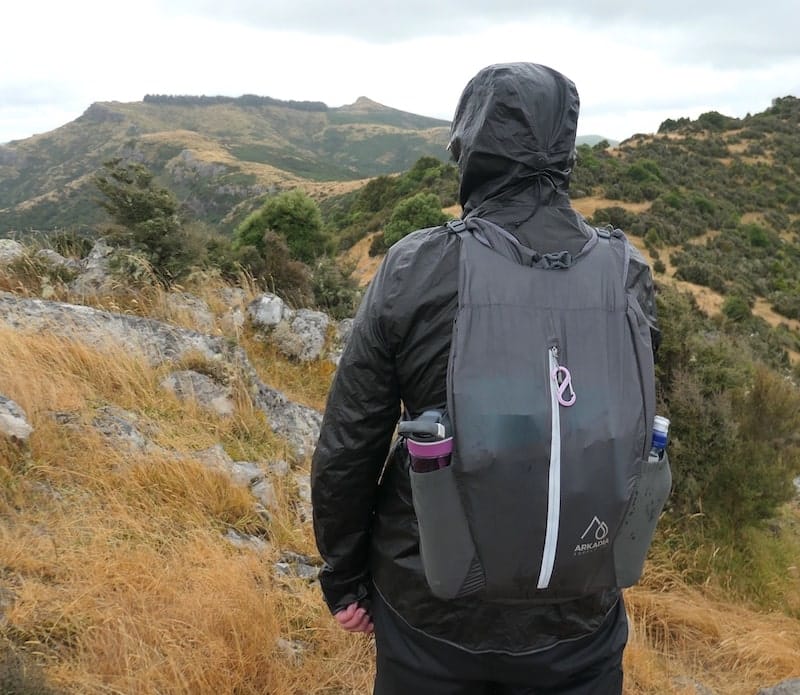
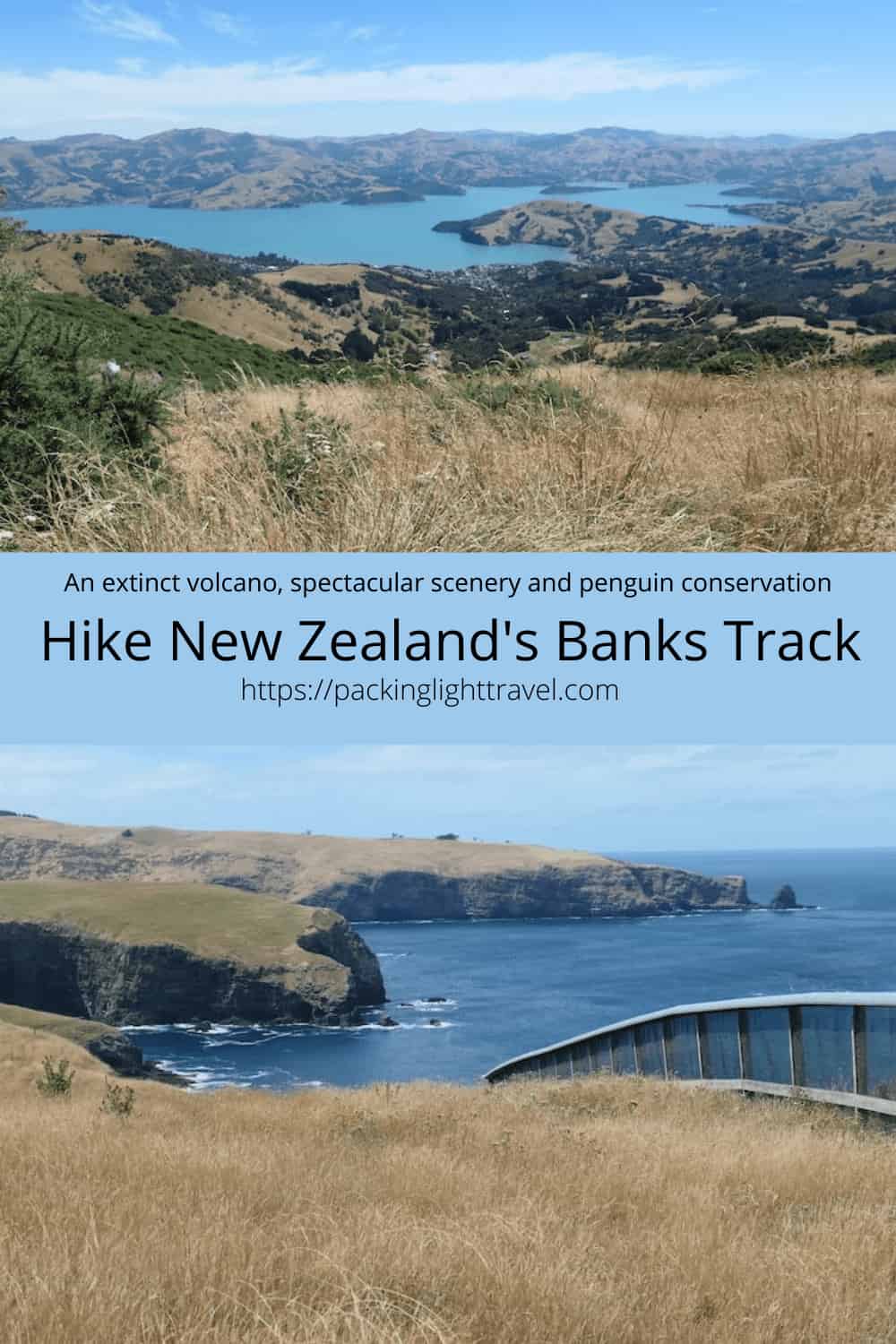




Thanks for sharing your Banks Track Experience.
You’ll be pleased to hear that Pack Cartage is now included in all Three Day Classic Walk bookings.